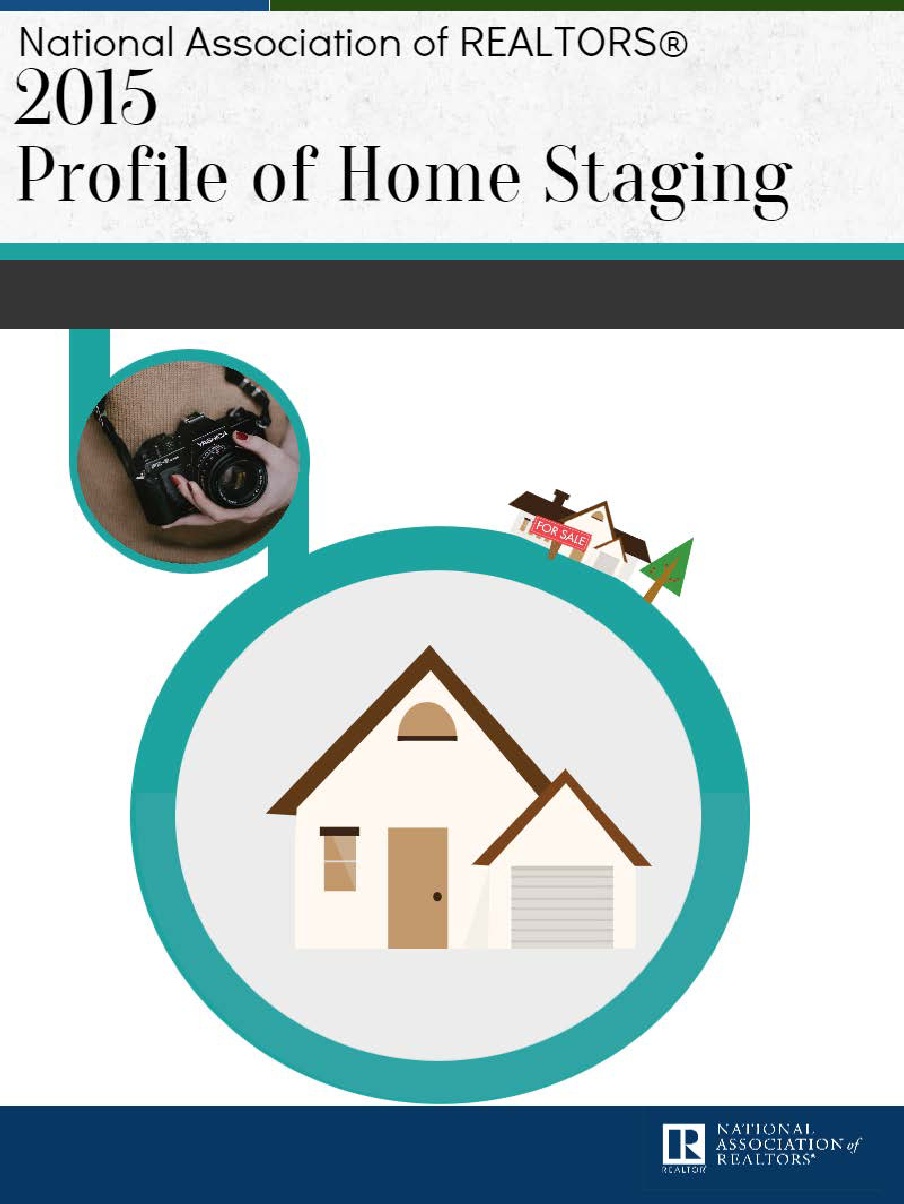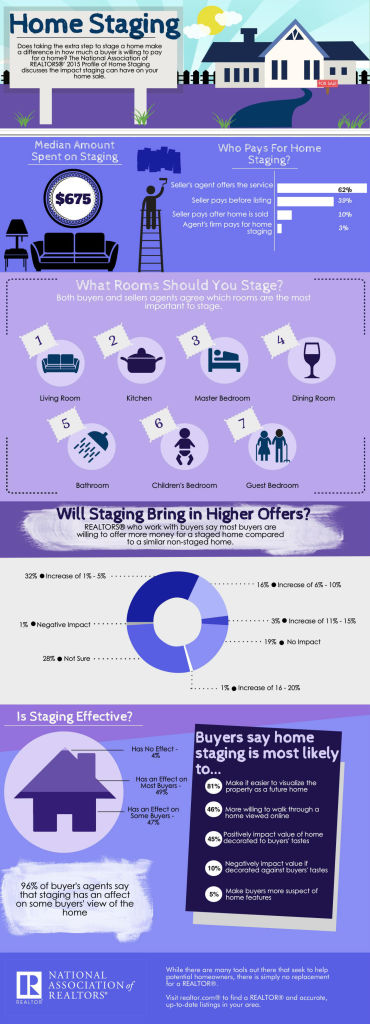How To Sell Your House Charleston SC: Can You Afford NOT To Stage Your House?
If you are wanting to know how to sell your house Charleston SC, then two important factors are pricing your home correctly from the start and a good marketing campaign. But there is another thing to consider: staging your home.
Currently, most of the greater Charleston real estate market is in a sellers market. The Charleston market is a pretty hot market right now, and the demand for houses exceeds the supply. So, getting your home sold is pretty easy in today’s market, right?
Not so much.
For instance, there are currently 5,417 homes listed for sale on the Charleston MLS. The Average Days On The Market for 2014 (and so far into 2015) is 79. Of those 5,417 homes listed for sale, 3,289 of them have been on the market for 79 days or more.
Of course the numbers may vary by city to city and neighborhood to neighborhood, but this simply illustrates the bigger point that getting a home sold in Charleston isn’t as simple as putting a sign in the yard.
An important aspect to selling a home in any market is making it stand out above the competition, and staging is an excellent way to do that.
The National Association of Realtors recognizes the importance of home staging and released their first ever “2015 Profile of Home Staging”.
You can click on the infographic above for the details, but here are the highlights (from realtor.org):
- Among REALTORS® who typically represent the buyer, 49 percent report most buyers are effected by home staging and 47 percent report some buyers are effected by home staging.
- Among sellers’ agents 34 percent stage all homes, 13 percent stage difficult homes to sell, and four percent stage only high price bracket homes.
- Thirty-two percent of buyers’ agents believe staged homes increases the dollar value buyers are willing to offer by one percent to five percent.
- The median dollar value to stage a home is $675 for each home.
What Exactly Is Home Staging?
Many people aren’t sure what staging is exactly, or think it involves filling your house up with expensive furniture and decorations. However, that is not the case entirely. Here is a breakdown of what a home stager does (courtesy of Ilona Bray’s “Is Home Staging Worth The Cost?” at www.nolo.com):
A home stager is similar to an interior decorator — with expertise in planning and choosing colors, fabrics, and furniture, and arranging them all in a way that makes your home look its best.
But a good home stager brings a few extra things to the mix. The stager is not focused on creating a home that suits your personal taste and need for everyday comforts, but instead on making your home appeal to a broad range of tastes.
Livable or not — probably not, after you’ve hidden the toaster, toothpaste, and laundry hamper — the idea is for the stager’s work to help people fall in love with your place and want to buy it.
More specifically, here’s what a stager might do to get your house ready for sale:
- Examine your home from top to bottom, and explain — ideally in a written report — what should be done to get it ready. Together, you and the stager can review the recommendations and costs, and develop a plan of action.
- Identify specific ways to highlight your home’s best features and compensate for its shortcomings. For example, the stager might recommend removing curtains from a window that has a great view; or, in a small bedroom, replacing the double bed with a twin or even a baby’s crib, in order to make the space look larger.
- Recommend which items of your furniture and household possessions should stay in the house and which should be removed before an open house or showing. Be prepared to have to either move or place into storage the majority of your possessions, so as to de-clutter and depersonalize your house. This will, of course, be much easier if you’ve already moved into your next abode.
- Help you arrange for recommended repairs or other major work on your home — by lining up contractors, carpenters, painters, and landscapers, and overseeing their work. (You’ll normally pay their bills separately, however.)
- Bring in furniture, art work, curtains, carpets, pillows, and even artful-yet-homey objects like a bowl of oranges (either real or high-quality fakes!), potted orchids, and a welcoming doormat. Many stagers keep warehouses of this stuff, all carefully matched and chosen to make your house feel like a place where people can live their dream life.
- Add finishing touches before an open house or major showing. For example, the stager might add fresh flowers, or put a pie in the oven on low heat in order to waft delicious aromas through the house.
One thing to keep in mind, home staging doesn’t necessarily mean a complete transformation. It can simply mean rearranging furniture to make rooms feel larger, or something like some fresh paint.
While home staging can cost a thousand dollars or more, it doesn’t always have to–the NAR report showed that the median cost for staging was $675.
Is this something you can do yourself?
Ilona Bray answers that question:
Of course, you may already own well-chosen furniture and gorgeous home accessories and have an eye for decorating. If so, you might be able to reproduce the work of a stager and save the fee (which is typically in the thousands of dollars).
Some home stagers will also cut their fee if they use a good deal of your furniture as opposed to theirs. But like any of the tasks involved in selling your home, you need to ask yourself whether doing it yourself is worth your time and effort.
Even if your house is already in pretty good shape, you’ll inevitably find yourself working on basic things like choosing new paint colors, hiring workers, and shopping for the perfect table runner and fresh new doormat.
The hours you’ll spend on these tasks add up quickly — while hiring a stager means that most of it will happen like magic, while you turn your attention to the numerous other things on your plate.
Is The Cost Of Staging Worth It?
According to home staging expert Kristen DiNobile (from her article on about.com “Home Staging Myths“):
Statistics support the fact that staged homes do sell quicker and for more money.
- Sellers who spent $500 on staging recovered over 343% of the cost when they sold their home. (Homegain.com)
- According to the National Association of Realtors (NAR), the average staging investment is between 1 and 3% of the home’s asking price, which generates a return of 8 to 10%!
- In controlled tests selling identical homes professionally staged vs. those not staged, the unstaged houses sold in 102 days, while the staged houses sold in 45 days. (RealEstateStagingAssociation.com)
But there are other ways staging pays for itself:
1) You Only Get One Chance To Make A First Impression
Your home’s MLS photos and Virtual Tour are important because they are what potential buyers will see online. In real estate you always want your first impression to be your best impression–this is where the term “curb appeal” comes from. For almost all potential buyers, your home’s first impression will be online pictures.
A staged home really stands out above non staged homes in the eyes of homebuyers–it is more memorable. While buyers do not expect a home to be staged, they do respond to it positively.
2) Selling Faster Saves You From Mortgage Payments
The other key takeaway from Kristen DiNobile’s article is this:
In controlled tests selling identical homes professionally staged vs. those not staged, the unstaged houses sold in 102 days, while the staged houses sold in 45 days. (RealEstateStagingAssociation.com)
One thing to realize about a quick sale–the faster you sell means you save yourself having to pay another month’s mortgage payment. If you can be sold in 2 months rather than 4 (as in the quote above), you save 2 months worth of mortgage payments–that savings alone can offset the costs of staging.
3) Staging And Selling Faster Means You Don’t Have To Use Price Reductions As A Marketing Strategy
When clients are hesitant about the cost, I often tell them this. The cost of staging is usually significantly less than the cost of the first price reduction. Think about it. It’s not common for a home on the market to never have any price reductions.
How much is a typical price reduction? Often, it’s at least $5,000, but usually $10,000, and sometimes more. And don’t forget that many homes go through more than one price reduction before being sold. (Kristen DiNoble)
If you would like a copy of the NAR 2015 Profile Of Home Staging, you can download that here.
If you are thinking of selling in the greater Charleston SC area, then bee sure to visit my Pam Marshall Realtor website for helpful information, videos, and my “Sellers Marketing Pack”. You will see why it is so important, even in a sellers market, that you hire the right Realtor.
You can also check out my Pam Marshall Realtor blog for more help in learning how to sell your house Charleston SC.




Leave a Reply